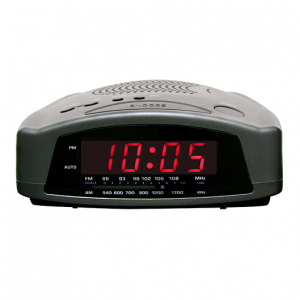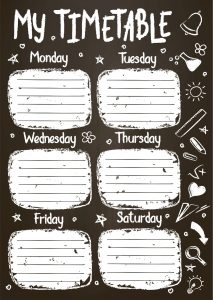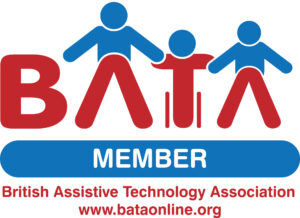The need for structure – wherever and whenever we learn
Working from home has its challenges. What to wear, where to sit, and whether you look presentable on a screen, or should you try giving yourself a haircut. But probably the biggest challenge for many of us, and for the children and young people we work with, is putting a structure into our day. When to start, when to stop, when to take a break.
 To some degree, for many of us, the patterns of the school regime will remain in place, either because of the demands of online teaching and learning, or because we appreciate the routine and have chosen to stick with it. Others of us will welcome the chance to change things around, to start work a little later after setting the alarm to a ‘more civilised time,’ or maybe enjoying a leisurely breakfast instead of grabbing something as we run out of the door. Perhaps we might chose to work into the evening, or even late at night, because that’s when we feel at our most productive.
To some degree, for many of us, the patterns of the school regime will remain in place, either because of the demands of online teaching and learning, or because we appreciate the routine and have chosen to stick with it. Others of us will welcome the chance to change things around, to start work a little later after setting the alarm to a ‘more civilised time,’ or maybe enjoying a leisurely breakfast instead of grabbing something as we run out of the door. Perhaps we might chose to work into the evening, or even late at night, because that’s when we feel at our most productive.
 However, whether we stick with what we know, or chose to mix it up a bit, we all of us, adults, adolescents and children alike, will encounter challenges. One is that if our classroom is our home and our home has become a classroom where is our sanctuary when we’ve had a bad day at school? How can we leave it behind? Similarly, when we’ve we got lots of work to do, how do we decide that we’ve done enough for the day when there is no-one walking through the building turning off the lights? For sure, teachers work at home, and set homework, but that is usually determined by how many books you can carry in a bag for life. When you don’t leave work behind on your desk, or in your locker, it is always available to be picked up and continued.
However, whether we stick with what we know, or chose to mix it up a bit, we all of us, adults, adolescents and children alike, will encounter challenges. One is that if our classroom is our home and our home has become a classroom where is our sanctuary when we’ve had a bad day at school? How can we leave it behind? Similarly, when we’ve we got lots of work to do, how do we decide that we’ve done enough for the day when there is no-one walking through the building turning off the lights? For sure, teachers work at home, and set homework, but that is usually determined by how many books you can carry in a bag for life. When you don’t leave work behind on your desk, or in your locker, it is always available to be picked up and continued.
 Putting a structure on our working day helps to keep things manageable, enabling us to decide when to stop, and in some instances, knowing that it is time to start. Whilst these are real challenges for us as adults, they can be even more so for the children and young people that we work with. Especially those with additional learning needs.
Putting a structure on our working day helps to keep things manageable, enabling us to decide when to stop, and in some instances, knowing that it is time to start. Whilst these are real challenges for us as adults, they can be even more so for the children and young people that we work with. Especially those with additional learning needs.
For instance, it has long been recognised that some people with dyslexia find getting organised particularly difficult, with a tendency to take a scattergun approach to jobs in hand. Whilst those with ADHD may find it hard to stick with a task, perhaps beginning it repeatedly and reaching the same point before losing focus and needing to return to the start. Other learners, those with autistic spectrum conditions in particular, appreciate the certainty of a regulated day, knowing what happens when, and what is due to happen next.
 Whilst we, as the adults in their lives, have a role to play in creating a structure, a space within which they feel safe and supported, one in which they can thrive, a disruption to routine can also provide an opportunity for change. Just like us, they may not be at their most productive between nine in the morning and three in the afternoon. They might prefer to start earlier or finish later. Perhaps they find it easier to study in short bursts, or, conversely, to work at one thing until it is completed, rather than trying to replicate the pattern of a school timetable.
Whilst we, as the adults in their lives, have a role to play in creating a structure, a space within which they feel safe and supported, one in which they can thrive, a disruption to routine can also provide an opportunity for change. Just like us, they may not be at their most productive between nine in the morning and three in the afternoon. They might prefer to start earlier or finish later. Perhaps they find it easier to study in short bursts, or, conversely, to work at one thing until it is completed, rather than trying to replicate the pattern of a school timetable.
 This is a time when we can accommodate the working preferences of children and young people, helping them to make decisions that will, to whatever degree, give them responsibility for what they do and when. Of course, this is not an entirely free choice. Just as with ourselves, there are expectations for what we will complete and by when. But by introducing some degree of flexibility and personal choice we can engage them in managing their own time, and their learning. Periods of study can be broken up with downtime activities. Goals can be set and activity monitored.
This is a time when we can accommodate the working preferences of children and young people, helping them to make decisions that will, to whatever degree, give them responsibility for what they do and when. Of course, this is not an entirely free choice. Just as with ourselves, there are expectations for what we will complete and by when. But by introducing some degree of flexibility and personal choice we can engage them in managing their own time, and their learning. Periods of study can be broken up with downtime activities. Goals can be set and activity monitored.
 Guidance may be needed. For instance, to ensure that not every break is filled with a session of Fortnite, that some will include a kickabout in the park, and that ten minutes of focus is not rewarded with two hours of screentime. We may want to;
Guidance may be needed. For instance, to ensure that not every break is filled with a session of Fortnite, that some will include a kickabout in the park, and that ten minutes of focus is not rewarded with two hours of screentime. We may want to;
- Acknowledge that we are all different, but insist that doing nothing is not an option.
- Help organise a varied diet of both work and play (or rewards).
- Formulate a structure – whether that is a timetable, a tick list of tasks, or a series of deadlines. What works best for them?
- Initiate practical strategies, such as a kitchen timer, visual timetable, or a set of containers or folders to discriminate between tasks.
- Recognise the need to re-negotiate, that you won’t get it right the first time, and situations change.
- Be a role model ourselves in demonstrating the discipline to get things done.
With support, we can make this an opportunity to learn about creating a disciplined approach to working, one that they can have some ownership of. One that will keep them in good stead for life. Perhaps as future educators working from home.
By John Galloway
John specialises in the use of technology to improve educational opportunities for children and young people with special educational needs. Much of the week he works in Tower Hamlets, in London’s east end. He also freelances as a writer, consultant and trainer. @johngalloway







